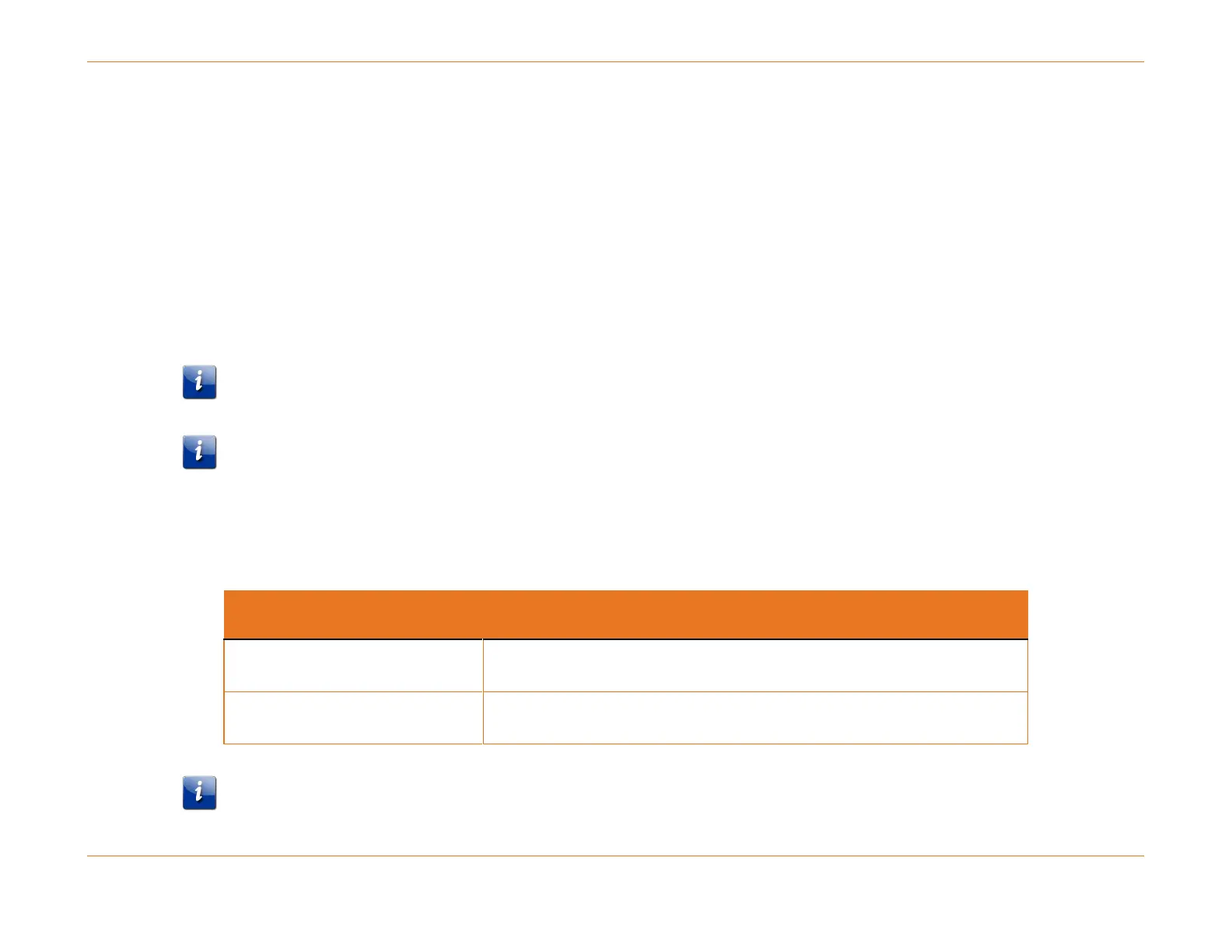Chapter 14: Cable-side Configuration
STANDARD Revision 1.0 C4® CMTS Release 8.3 User Guide
© 2016 ARRIS Enterprises LLC. All Rights Reserved. 404
channels from each fiber node in the ambiguity list. The method to determine how many channels, and which of those
channels will be selected for the ambiguity list, is as follows:
Divide 16 by the number of fiber nodes in the cable mac. Round down to the nearest whole number.
For example:
If there are 4 fiber nodes, then 16 / 4 = 4 channels from each fiber node added to the ambiguity list.
If there are 6 fiber nodes, then 16 / 6 = 2.67, which is rounded down to 2 channels from each fiber node added to the
ambiguity list.
The C4/c CMTS selects each channel with the lowest channel ID to be added to the ambiguity list, as configured by the
command:
configure interface cable-upstream <s/cg/ch[.0]> cable channel-id <1-255>
Note 1: An individual US Channel can only belong to a single MD-US-SG.
Note 2: The customer must ensure that supervision for the channels selected for the ambiguity list have supervision
configured for at least one primary capable downstream channel in the fiber nodes associated with each upstream
channel. It is recommended that supervision is configured on all primary downstream channels for each upstream channel
in the ambiguity list.
Table 59. MDD Upstream Ambiguity List Reduction CLI Commands
Configures the cable channel ID for
the interface cable-upstream.
configure interface cable-upstream <s/cg/ch[.0]> cable channel-id <1-255>
Enables/Disables USAmbiguity list
reduction mode.
configure operation mode USAmbiguityListReduction
configure operation mode USAmbiguityListReduction no
Note 3: When enabling or disabling this feature, each upstream CAM must be reset for the feature to take effect. If
upstream CAM redundancy is supported, a fail over and back will cause the feature to take effect.
